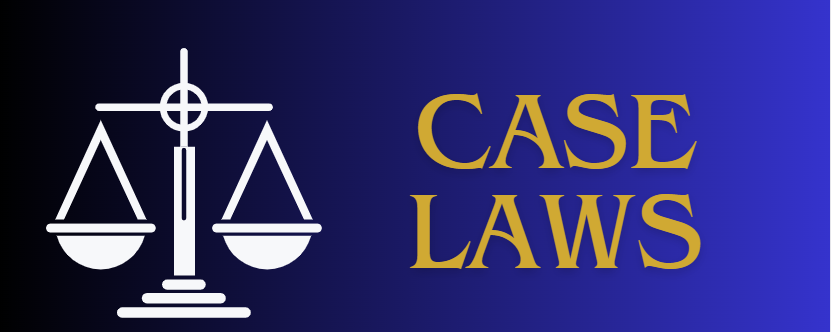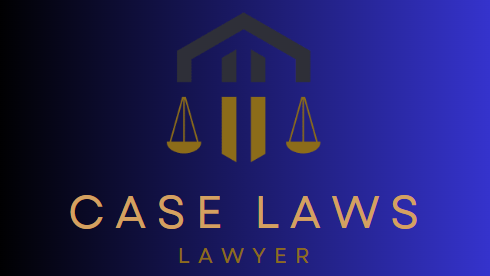2025 PCr.LJ 922
سیکشن 342 ، Cr.P.C.
یہ دو حصوں پر مشتمل ہے ۔ پہلا حصہ حکم دیتا ہے کہ تفتیش یا مقدمے کی سماعت کے کسی بھی مرحلے پر عدالت ، ملزم کو پہلے خبردار کیے بغیر ، اس کے خلاف لائے گئے کسی بھی ثبوت کے سلسلے میں اس کی وضاحت حاصل کرنے کے لیے اس سے سوالات پوچھ سکتی ہے ۔ دوسری طرف ، دوسرا حصہ عدالت پر یہ فرض عائد کرتا ہے کہ وہ استغاثہ کے گواہوں سے پوچھ گچھ کے بعد اور اس سے پہلے کہ اسے اپنے دفاع کے لیے بلایا جائے ، عام طور پر کیس پر اس سے پوچھ گچھ کرے ۔ دفعہ 342 ، Cr.P.C کے تحت ملزم کی جانچ ۔ مقدمے کی سماعت کے دوران استغاثہ کی طرف سے اس کے خلاف لائے گئے شواہد اور حالات سے متعلق ہونا چاہیے ۔ یہ کوئی غیر رسمی رسم نہیں ہے بلکہ اسے انصاف اور منصفانہ کھیل کے مفاد میں انجام دیا جانا چاہیے ۔
یہ قانون کا مینڈیٹ ہے کہ ہر مجرمانہ ثبوت یا حالات جو کسی ملزم کے خلاف استعمال کرنے کی کوشش کی جاتی ہے اسے دفعہ 342 ، سی آر پی کے تحت اس کے سامنے رکھا جانا چاہیے ۔ P.C. ملزم کو اس کی وضاحت کرنے کے قابل بنانے کے مقصد کے لیے ۔ یہ ضروری ہے کہ ملزم کی توجہ ایک ایک کر کے تمام شواہد کی طرف مبذول کرائی جائے ، کراسسیسیمینیشن کی شکل سے گریز کیا جائے ، تاکہ اسے اپنی بے گناہی کے مطابق وضاحت دینے کا موقع فراہم کیا جا سکے ۔ اس کے باوجود یہ بنیادی قانون ہے کہ ملزم کی توجہ ہر اشتعال انگیز مواد کی طرف مبذول کرائی جانی چاہیے تاکہ وہ اس کی وضاحت کر سکے ۔ یہ مجرمانہ مقدمے کی بنیادی انصاف پسندی ہے اور اگر اس کے نتیجے میں انصاف کا غلط استعمال ہوتا ہے تو اس شعبے میں ناکامیاں مقدمے کی صداقت کو شدید خطرے میں ڈال سکتی ہیں ۔ تاہم ، جہاں اس طرح کی غلطی ہوئی ہے تو یہ عملی طور پر کارروائی کو خراب نہیں کرتا ہے اور اس طرح کے عیب کی وجہ سے ہونے والے تعصب کو ملزم کے ذریعہ قائم کیا جانا چاہئے ۔ سیکشن 342 Cr.P.C کے تحت ایک ملزم کی جانچ پڑتال کے دوران سیکھا ٹرائل کورٹ کی طرف سے کی گئی نقائص اور غلطیوں کی وجہ سے ایک مقدمے کی سماعت خراب ہے یا نہیں کا سوال. غلطی کی ڈگری پر منحصر ہے اور ملزم کو یہ ظاہر کرنا ہوگا کہ سیکشن 342 Cr.P.C کی عدم تعمیل. اس نے اپنے دفاع میں مادی طور پر تعصب کیا ہے ۔ صرف سیکشن 342 Cr.P.C. کے تحت ناقص پوچھ گچھ کی وجہ سے ، یہ اندازہ نہیں لگایا جاسکتا ہے کہ ملزم کے ساتھ کوئی تعصب پیدا ہوا تھا ، یہاں تک کہ یہ فرض کرتے ہوئے کہ استغاثہ کے معاملے میں کچھ مجرمانہ حالات کو چھوڑ دیا گیا تھا ۔ جب ملزم سے تعصب کا الزام لگایا جاتا ہے ، تو یہ ظاہر کرنا پڑتا ہے کہ ملزم کو دفعہ 342 Cr.P.C کے تحت اس کو دیئے گئے تحفظ کے سلسلے میں کچھ معذوری یا نقصان پہنچا تھا ۔ اس طرح کے تعصب سے یہ بھی ظاہر ہونا چاہیے کہ اس سے انصاف کی ناکامی ہوئی ہے ۔ ملزم پر یہ ثابت کرنے کا بوجھ ہے کہ اس کے ساتھ تعصب پیدا ہوا ہے اور اس طرح کا تعصب مضمر ہے ۔
مذکورہ بحث سے یہ نتیجہ نکلتا ہے کہ اپیلٹ عدالت کو استغاثہ کی طرف سے پیش کردہ تمام مجرمانہ مواد کی جانچ پڑتال کرنی ہے اور یہ دیکھنا ہے کہ ملزم کے سامنے کون سا ثبوت یا حالات نہیں رکھے گئے ہیں اور اس کا کیس کی قسمت پر کیا اثر پڑتا ہے ۔ اسی طرح ، یہ اس بات کا تعین کرے گا کہ آیا اس سے پوچھے گئے سوالات قانون کے مطابق تھے اور وہ ان میں سے کسی کے ذریعے گمراہ نہیں ہوئے تھے ۔ اگر یہ نتیجہ اخذ کرتا ہے کہ سیکشن 342 ، Cr.P.C کی دفعات کے ساتھ عدم تعمیل. ملزم پر تعصب کیا ہے ۔ اس معاملے کو دوبارہ ٹرائل کے لئے ٹرائل کورٹ کو بھیج سکتا ہے جہاں اس مقام سے بے ضابطگی واقع ہوئی ہے ، یعنی دفعہ 342 Cr.P.C کے تحت ملزم سے پوچھ گچھ کے مرحلے سے ۔ "عدالت کا ایک عمل کسی شخص کو تعصب کا شکار نہیں کرے گا" کا اشارہ کرنے والا مشہور قول انصاف اور عقل پر مبنی ہے ؛ اور قانون اور انصاف کے انتظام کے لیے ایک محفوظ اور مخصوص رہنمائی فراہم کرتا ہے ۔ اس کا مقصد اس بات کو فروغ دینا اور اس بات کو یقینی بنانا ہے کہ انصاف کے مقاصد پورے ہوں ۔ اس میں یہ تجویز کیا گیا ہے کہ عدالت کے سامنے مدعیوں کے حقوق اور مفاد کو کوئی نقصان یا چوٹ عدالت کے عمل یا غلطی کی وجہ سے نہیں پہنچے گی ۔ انصاف کے انتظام کا یہ قاعدہ عدالت کے سامنے مدعیوں کے دونوں فریقوں کے فائدے کے لیے ہے اور یہ تصور کرنا غیر منطقی ہوگا کہ یہ قاعدہ ایک مدعیوں کے فائدے کے لیے دوسرے کے تعصب اور نقصان کے لیے لاگو ہوگا یا ہونا چاہیے ۔ عدالت کا فرض ہے کہ وہ فریقین کے درمیان غیر جانبدار ثالث کے طور پر کام کرے اور قانون کی سختی سے پابندی اور ہر معاملے کے حقائق کو ذہن میں رکھتے ہوئے انہیں انصاف فراہم کرے ۔ سیکھے ہوئے ٹرائل کورٹ کو سیکشن 342 Cr.P.C کے تحت اپیل کی جانچ پڑتال کرنے کی ہدایت کرنا ۔ استغاثہ کے مقدمے میں خامی کو پر کرنے کی مذمت نہیں کی جا سکتی ۔
Section 342, Cr.P.C. consists of two parts. The first part ordains that at any stage of inquiry or trial the Court may, without previously warning the accused, ask him questions to elicit his explanation in respect of any evidence brought against him. On the other hand, the second part casts a duty on the Court to question him generally on the case after the prosecution witnesses have been examined and before he is called on for his defence. The examination of the accused under section 342, Cr.P.C. must relate to the evidence and the circumstances which are brought against him by the prosecution during the trial. It is not an inane formality but has to be carried out in the interest of justice and fair play.
It is the mandate of the law that every incriminating evidence or circumstance that is sought to be used against an accused must be put to him under section 342, Cr. P.C. for the purpose of enabling the accused to explain the same.It is essential that the attention of an accused should be drawn to all the pieces of evidence one by one, avoiding the form of crossexamination, in order to afford him an opportunity of giving an explanation, consistent with his innocence. It is trite law, nevertheless fundamental, that the accused's attention should be drawn to every inculpatory material so as to enable him to explain it. This is the basic fairness of a criminal trial and failures in this area may gravely imperil the validity of the trial itself, if consequential miscarriage of justice occurs. However, where such an omission has occurred it does not ipso facto vitiate the proceedings and prejudice occasioned by such defect must be established by the accused. The question of whether a trial is vitiated or not due to defects and errors made by the learned trial court while examining an accused under section 342 Cr.P.C. depends upon the degree of the error and the accused must show that non-compliance of section 342 Cr.P.C. has materially prejudiced him in his defence. Merely because of defective questioning under section 342 Cr.P.C., it cannot be inferred that any prejudice had been caused to the accused, even assuming that some incriminating circumstances in the prosecution case had been left out. When prejudice to the accused is alleged, it has to be shown that the accused had suffered some disability or detriment in relation to the safeguard given to him under section 342 Cr.P.C. Such prejudice should also demonstrate that it has occasioned a failure of justice . The burden is upon the accused to prove that prejudice has been caused to him and such prejudice be implicit.
From the above discussion, it follows that the appellate court has to examine all the incriminating material produced by the prosecution and see what piece of evidence or circumstance has not been put to the accused and its impact on the fate of the case. Similarly, it would determine whether the questions put to him were in accordance with law and he was not misled by any of them. If it comes to the conclusion that non-compliance with the provisions of section 342, Cr.P.C. has prejudiced the accused it may remit the matter to the trial Court for retrial from the point where the irregularity occurred, that is, from the stage of questioning the accused under section 342 Cr.P.C.. The noted maxim which connotes "an act of the court shall prejudice no man" is founded upon justice and good sense; and affords a safe and certain guide for the administration of law and justice. It is meant to promote and ensure that the ends of justice are met; it prescribes that no harm and injury to the rights and the interest of the litigants before the court shall be caused by the act or omission of the court. This rule of administration of justice is meant for the benefit of both sides of litigants before the court and it would be illogical to conceive that the rule would or should be applied for the advantage of one litigant to the prejudice and disadvantage of the other. It is the duty of the court to act as a neutral arbiter between the parties and to provide justice to them through strict adherence to the law and keeping in mind the facts of each case. Directing the learned trial court to correctly examine the appellant under section 342 Cr.P.C. cannot be condemned as filling up the lacuna in the prosecution case.
Crl. Appeal-243-23
STATE ETC





0 Comments